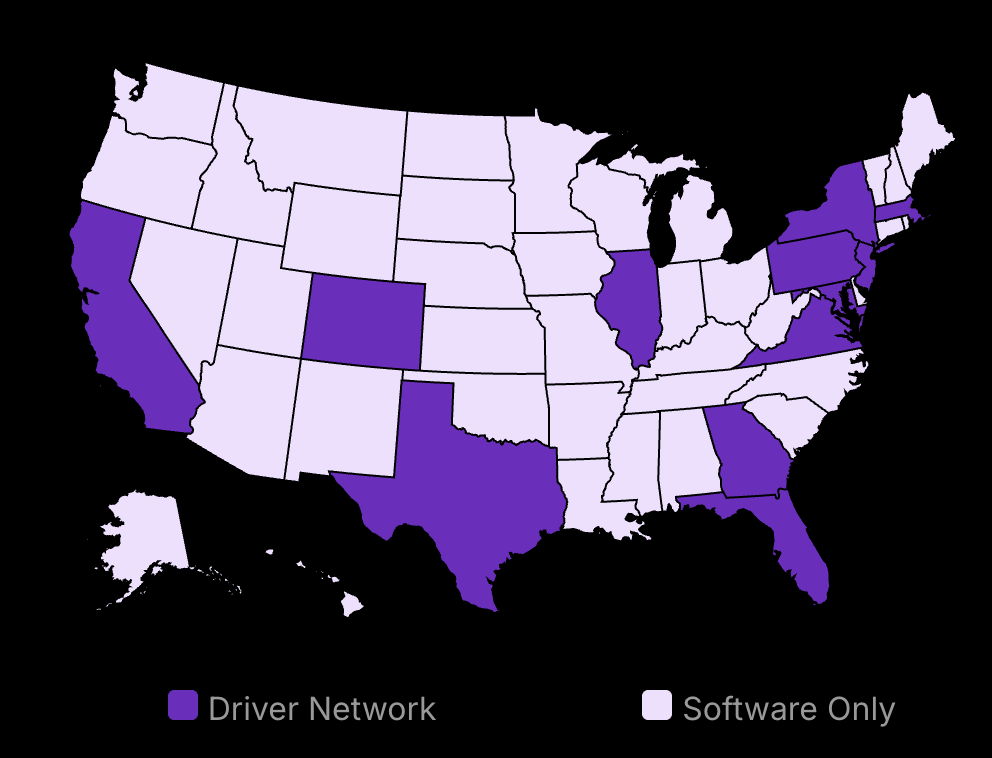Business navigation is changing fast in 2025. Google Maps remains powerful, but it’s no longer the only smart choice for companies that need location services. Many businesses lose money and time by sticking to what they know instead of exploring better options.
The numbers tell an interesting story: 73% of businesses still default to the Google app and Maps without checking alternatives. This happens while new mapping apps and tools offer features that could cut operational costs by up to 40%, according to recent McKinsey research.
Let’s look at what’s happening in 2025:
Small delivery companies are saving $5,000 monthly with specialized mapping tools
Retail chains are increasing foot traffic by 25% using AI-powered location analytics
Logistics firms are reducing fuel costs by 30% with smart route optimization
The mapping technology landscape has shifted. New players bring advanced features unlike Google Maps like predictive traffic patterns, more detailed maps, business analytics, and offline capabilities that work better than Google Maps in many situations. For businesses looking to streamline their operations, utilizing tools like the Apple Business Manager can enhance workflow efficiency and improve task management capabilities. This platform offers unique features suitable for various business needs in 2025.
This guide examines the best Google Maps alternatives that are changing how businesses operate. Each tool offers unique advantages – from Waze’s real-time traffic updates to Mapbox’s deep customization options. We’ll also look at what’s coming next best these popular Google Maps alternative alternatives: AI integration, augmented reality features, and sustainable routing options. As businesses navigate the complex landscape of location services, leveraging tools such as Apple Maps can provide an innovative edge in attracting local customers. This platform enables businesses to enhance visibility and engagement, aligning with the growing demand for precise and user-friendly mapping solutions.
The right mapping tool can transform your business operations. Let’s explore these alternatives and find the perfect fit for the navigation app and web mapping interface for your needs.

Boost customer satisfaction with just a few clicks
Most-Loved Features:
- On-demand drivers
- Real-time GPS tracking
- Delivery confirmation photos
- Over 50% of customers report a smoother delivery experience
Best Google Maps Alternatives For Businesses
Exploring Essential Alternatives to Google Maps
Navigating customization, offline maps, and real-time capabilities
Evaluating integration, community-driven updates, and cost-effectiveness
Choosing an effective mapping tool is crucial for businesses seeking reliability and accuracy. Whether looking for real-time, traffic alerts and updates or customizable mapping solutions, several viable alternatives to Google Maps app are available.
Waze for Active Traffic Updates
Waze is a standout for its real-time traffic data speed camera alerts. It uses reports from its community to identify traffic jams, accidents, and even police alerts. This means users can trust it for up-to-the-minute traffic information and road conditions.
Waze is particularly useful in urban areas where traffic can change rapidly. Businesses can benefit from the free version of Waze by using it to optimize delivery routes and save time. However, some critics argue that its heavy reliance on user-generated data can sometimes lead to inaccuracies.
Mapbox for Customization
Mapbox shines in customization, allowing businesses to design maps specific to their needs. It offers integration capabilities with apps and websites, providing high-quality visual mapping tools. This can be essential for businesses wanting unique branding on their maps or specific data layers relevant to their industry.
One potential downside is the learning curve for businesses unfamiliar with coding or design. But despite this, the flexibility and control Mapbox provides can lead to greater customer engagement.
HERE WeGo for Offline Navigation
HERE WeGo offers robust offline maps and navigation, making the web version ideal for global businesses operating in areas with poor connectivity. Its global mapping coverage includes turn-by-turn navigation, making it a dependable choice for international travel.
Some challenges come from potential discrepancies between online and offline map data due to updates not syncing to download offline maps instantly. However, the peace of mind of having offline map capabilities can outweigh these concerns for many.
OpenStreetMap for Open Data Access
OpenStreetMap (OSM) stands out due to its open-data model, allowing users to edit and ensure information remains current. It’s also valuable for businesses using GIS applications, as the data can easily be integrated and manipulated.
A key challenge can be the varying accuracy of data since it’s all user-generated. Yet, its unique features of free access to download map data, and interoperability make it a strong contender in the mapping industry.
Bing Maps for Business Integration
Bing Maps provides seamless integration with Microsoft products, making it suitable for businesses already invested in Microsoft’s ecosystem. Its bird’s eye view feature is useful for detailed visual inspections without on-site visits. Additionally, it’s often more cost-effective than some of its competitors, which can be a significant advantage for small to medium businesses.
However, its market share is smaller compared to Google Maps. Still, the robust integration and lower cost appeal to many businesses seeking an efficient tool.
Enhanced Location Intelligence Platforms in 2025
Esri ArcGIS for Advanced Analytics
For complex spatial analytics, Esri ArcGIS stands out. It’s perfect for data visualization and offers insights tailored to different industries. With extensive APIs and software development kits, it’s highly adaptable. According to Soliman G., “The integration with Esri’s ecosystem and the ability to automate workflows using Python makes it incredibly versatile for tackling complex geospatial challenges.” This makes it clear why it’s a preferred tool against Google Maps or Apple Maps.
Targomo for Location-based Predictions
Targomo is excellent for businesses needing predictive analytics for smarter decisions. It helps in optimizing supply chains and selecting retail sites. Its strength in predicting key business metrics like store revenue highlights its practicality. Targomo claims, “More than 80% of the success of individual retail chain stores depends on their location.” Companies aiming to foresee market trends and logistics efficiency can rely on Targomo’s capabilities.
Carto for Data-driven Mapping
If your focus is on spatial data insights and demographic analysis, Carto offers the right tools. It’s designed for team collaboration, making data-driven mapping more efficient. Jason McVay says, “CARTO makes map-making easy. I can quickly pull the data in, get it on a map, do some light SQL and then share.” This ease of use can be crucial for quick decision-making in businesses.
Business Navigation Solutions
Data privacy is a top priority
Customized tools are in high demand
Offline capabilities are no longer optional
Rising Importance of Data Privacy
The way businesses handle data privacy has become more critical than ever. Customers want to know how their data is used. Trust is built through transparency. This means businesses should audit their data practices regularly. Make sure these align with current regulations and societal expectations. The demand for tools with strong privacy controls is growing.
Failing to adapt to these changes can result in losing customer trust. Some businesses are even facing legal challenges. Tools that offer enhanced privacy settings give them a competitive edge. They not only satisfy legal requirements but also attract more conscientious clients.
Moving into the future, expecting data privacy concerns to diminish would be misguided. Instead, the spotlight is on innovation in privacy. This includes anonymization and data minimization techniques. Investigating these topics can be supported by sources like privacy regulatory guidelines and journals dedicated to information security.
Increased Demand for Custom Solutions
Businesses have sought out navigation tools that reflect their unique operational needs. Off-the-shelf products no longer cut it. Companies want tools that synchronize with their existing systems seamlessly. Customization has become a competitive advantage.
Businesses that invest in custom solutions manage operations better and see higher efficiency. An example is tools that integrate inventory tracking with delivery routes. This can streamline logistics and improve overall service. Keen observers might notice a pattern here. There’s a shift toward proprietary software development. This shift addresses specific business challenges that generalized tools may overlook.
Shift Toward Hybrid Navigation Systems
Hybrid navigation systems, merging online and offline capabilities, have marked a significant trend. This trend draws from the need to ensure navigation tools function effectively, even when connectivity to offline mobile maps is not reliable. Internet coverage can be patchy in some regions. Hybrid systems solve this problem by using an internet connection and storing critical data locally.
These systems are resilient to connectivity disruptions, ensuring continuous offline functionality. Industries in remote areas benefit greatly from offline mode. For instance, a mining enterprise in remote regions cannot rely solely on online maps. Offline capabilities are not just a luxury. They are crucial. The shift towards hybrid systems makes tools like HERE WeGo more appealing. They offer robust offline features.
Fostering Cross-Platform Integration
With a myriad of detailed maps or navigation tools available, seamless integration across platforms has become more of a necessity than a convenience. Businesses rely on multiple tools. Ensuring communication between these platforms makes operations smooth. Storing data in one system and accessing it through another helps streamline processes.
Cross-platform integration enhances functionality. Take a logistics company. Its route planning tool must sync with traffic data providers. This ensures timely adjustments in delivery schedules. Companies investing in integration see improved resource management. It reduces manual data entry errors, saves time, and enhances decision-making.
Emphasis on User Experience and Accessibility
User experience (UX) and accessibility have become major deciding factors in choosing business Google Maps alternative tools. A tool’s ease of use can affect its adoption rate within a company. Google Maps’ alternative tools must cater not only to tech-savvy employees but also to those less comfortable with new technology. Accessibility features such as voice commands, high-contrast modes for visual impairments, and language options are critical.
An example of the importance of this trend is customer feedback. If a Google Maps alternative is too complex, users will simply move on to another easier-to-use solution. Google Maps alternative tools with intuitive interfaces and accessible features rank higher in user satisfaction. Industries such as healthcare and retail emphasize this need for user-friendly and intuitive user interfaces, due to the diversity of their user bases.
The Future of Business Mapping Tools in 2025 and Beyond
Smarter maps through AI lead to better business choices
AR makes customer interaction more engaging
Eco-friendly routes promote sustainability
AI Integration for Smarter Mapping
AI is reshaping how businesses handle navigation. It’s not just about getting from A to B. AI predicts traffic with more accuracy. This improves logistics and planning. AI analyzes big data, finding patterns in traffic and route usage. Imagine AI saying, “Avoid Main Street, try Second Street instead.” AI offers alternative routes that save time and fuel, reducing costs.
AI also personalizes navigation. It learns from previous routes, suggesting the best ones based on past choices. This is a key factor for delivery services. The human factor is also important; drivers have preferences. AI considers these, enhancing the experience.
Regarding insights, AI is not just about roads. It’s about logistics planning. AI simulates different routing strategies. It shows how a slight change can optimize truck routes, save time, or cut CO2 emissions.
Expansion of Augmented Reality (AR) Features
AR is bringing a new layer to business maps. The technology augments real surroundings with digital data. In retail, AR can guide customers in-store, leading them directly to products. This feature is not just a fancy tech gimmick. Some studies have noted a rise in customer satisfaction when using AR for navigation.
AR doesn’t stop at navigation. It enhances the marketing frontier. Businesses use AR for virtual store tours. Consumers experience product placements and store layouts before visiting the store. This virtual experience can drive real-world sales.
The marketing potential is vast. AR-based campaigns create immersive experiences beyond traditional methods. They engage the customer more deeply.
Growth of Sustainable Mapping Practices
Sustainability is becoming a core focus for businesses. Business mapping service also now integrates eco-friendly navigation options. These routes consider fuel efficiency and environmental impact. By reducing the carbon footprint, businesses align with global green initiatives.
Analyzing environmental impact is critical. These tools assess the ecological footprint of business logistics. They provide reports on CO2 emissions and fuel consumption. By offering insights, these tools help in adjusting routes for better sustainability.
Businesses supporting green initiatives can gain more than just compliance. They enhance their brand’s reputation. In 2025, consumers lean towards eco-conscious brands.
What is Business Mapping Software?
Business mapping software visualizes spatial data crucial for decision-making. It shows patterns and trends in location data that are not visible on traditional paper maps and spreadsheets. These detailed map tools are indispensable in sectors like retail, logistics, and real estate.
In retail, mapping software identifies ideal locations for new outlets. It compares consumer demographics and competitor locations. This aids in pinpointing areas with high potential. In logistics, maps optimize distribution routes, cutting costs and delivery times. While in real estate, mapping identifies value trends, enabling informed investment decisions.
Additionally, geographic insights help businesses adapt to changing conditions. This integration often leads to more informed strategies.
Google Maps Alternatives
The shift from Google Maps to other location data tools shows a clear trend: businesses need specific solutions for their exact needs. Each of the Google Maps alternatives we discussed brings its strengths. Waze excels in real-time updates, Mapbox offers deep customization, HERE WeGo maps work offline, OpenStreetMap provides community data, and Bing Maps integrates well with Microsoft products.
Looking at 2025’s business needs, the focus is on three key areas: data privacy, custom solutions, and hybrid systems that work both online and offline. These tools now come with AI features for better route planning and AR capabilities for enhanced customer experiences.
Combining these best Google Maps alternatives based on your business requirements is the most effective approach. For example, you might use Mapbox for your website’s visual user interface offline map access, while using HERE WeGo for your delivery fleet’s offline navigation.
Your next step is to evaluate your current mapping needs. Look at your business operations, identify gaps in your current system, and test one of these alternatives. You should start small – perhaps with a single department or team – and scale based on results. Additionally, enhancing your online presence can significantly impact how customers engage with your business. Leveraging strategies such as optimizing video content for search engines, specifically on platforms like YouTube, can help attract more local traffic. For expert insights, you can check out effective tips on YouTube SEO techniques.
Moreover, considering the advantages of using different mapping tools can help businesses thrive in attracting local customers. For instance, incorporating Apple Maps into your strategy can enhance visibility and engagement with your target audience, especially those searching for local services.




























